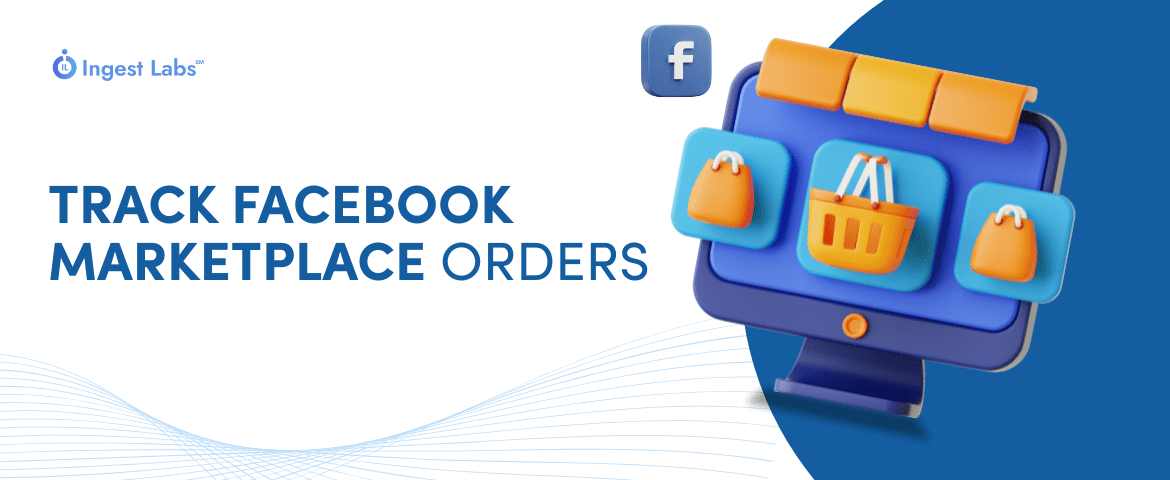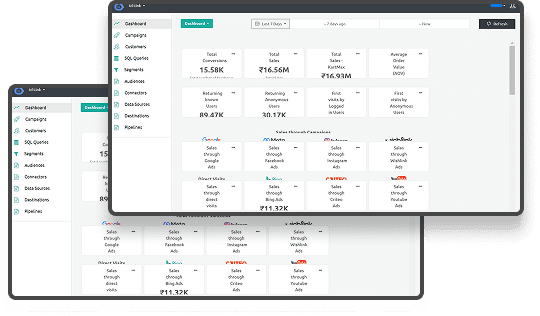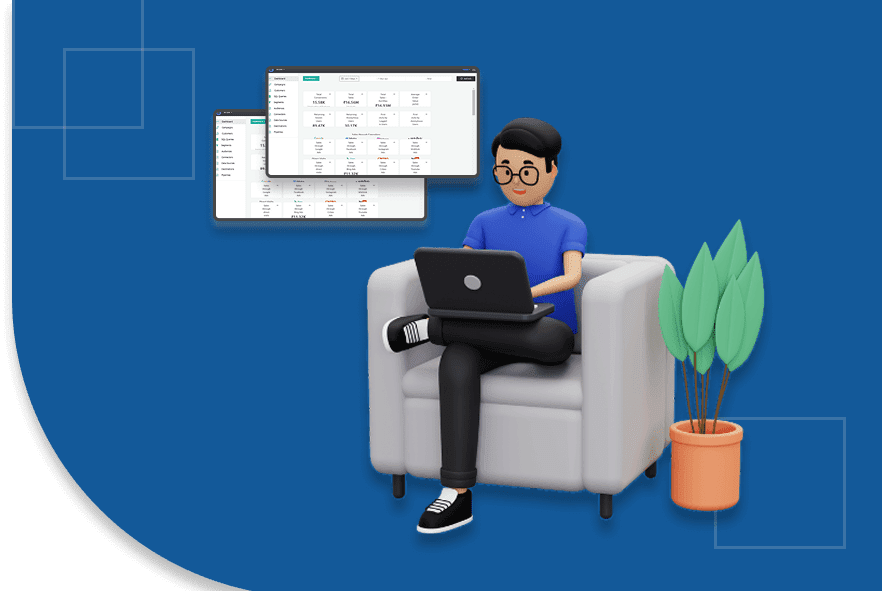How to Track Facebook Marketplace Orders
How can you effectively track Facebook Marketplace orders to improve customer satisfaction and operational efficiency?
Facebook Marketplace has experienced considerable growth. Over 40 million U.S. and Canadian adults aged 18 to 29 check Facebook daily, marking the highest engagement in three years. This surge in user activity underscores the platform's increasing relevance among younger demographics.
Simultaneously, small businesses allocate nearly 68.5% of their marketing budgets to Facebook, recognizing its potential to drive sales and customer engagement.
As the marketplace grows, so do the complexities of order tracking. Sellers encounter challenges in delivering timely and accurate tracking information, which can lead to customer dissatisfaction and operational inefficiencies. Addressing these issues is crucial for maintaining trust and optimizing operations.
This guide provides an overview of tracking Facebook Marketplace orders and troubleshooting common issues, helping sellers enhance customer satisfaction and streamline their processes.
Now, let’s walk through the essential steps for tracking your Facebook Marketplace orders to ensure a smooth and efficient process.
Accessing Your Facebook Marketplace Orders
To begin tracking your orders on Facebook Marketplace, knowing where to find them is important. Facebook Marketplace makes it easy for users to access and track their orders on desktop and mobile platforms.
Here’s how to navigate the platform and locate your orders:
- Navigating to Marketplace: If you’re on a desktop, you can find Facebook Marketplace by clicking on the Marketplace option in the left-hand menu. For mobile users, open the Facebook app, tap the three horizontal lines (or the menu icon), and look for Marketplace in the list of options.
- Locating 'Your Orders': Once inside Marketplace, you’ll see a section titled Your Orders. This section holds all your past and current purchases, including completed and pending orders. Clicking on Your Orders brings up a list where you can see all your transactions in one place.
- Understanding Order Statuses: Each order has a status, which helps you understand where the item is in the shipping process. Common statuses include Processing, Shipped, and Delivered. If an item is still being processed, the seller prepares it for shipment. When it’s marked as Shipped, it’s on its way, and once it’s Delivered, it has reached your destination.
Knowing these details will help you stay updated on each order’s progress. This transparency is key, especially for businesses looking to maintain their reputation for fast deliveries and reliable service. Let’s now explore how to view the actual tracking information for your orders.
Viewing Tracking Information for Orders
Once your seller ships an order, you’ll typically receive tracking information. Facebook Marketplace makes it easy to access this information, but it can vary depending on whether the seller provides it automatically or manually. Here’s how to stay updated on your order’s status:
Automatic Updates
Most of the time, when the seller ships your order, the tracking information updates automatically in your ‘Your Orders’ section. Once the product is dispatched, the system will update the order’s status and include a tracking number. This eliminates the need for you to follow up with the seller manually.
- Real-Time Updates: When the seller ships your order, you’ll see a tracking number beside the item in your Your Orders section. This number will provide real-time updates from the carrier, such as when the package is picked up, in transit, and out for delivery.
- No Need for Seller Follow-Up: Since the updates occur automatically, you don’t have to contact the seller to inquire about shipping status. This makes the process seamless and saves both you and the seller time.
The automatic tracking feature helps you stay informed without additional effort. Let's see what happens when the seller doesn’t automatically update tracking information.
Manual Entry by Sellers
In some cases, the seller might not automatically update the tracking details. This could happen if the seller ships items in batches or uses a method that doesn’t provide real-time tracking updates. If you don’t see tracking information immediately, knowing what to do next is important.
- Seller-Entered Tracking: If the seller uses a non-traditional shipping method that doesn't automatically update tracking, they can manually enter the tracking number in Facebook Marketplace. However, you’ll need to contact the seller if they haven't already done this.
- How to Request Tracking: You can message the seller directly through Facebook Marketplace if tracking information is missing. Politely ask for the tracking number, and the seller will provide you with the necessary details to enter the platform.
- No Updates? Keep in Touch: If the seller doesn’t update tracking after a reasonable period, follow up to ensure your package is on its way. If the seller remains unresponsive, you may need to explore further steps like filing a dispute or requesting a refund.
By understanding how manual tracking entries work, you can better manage situations where tracking information isn’t automatically provided. Now that you know how to handle manual entries, let’s discuss how to access real-time updates from the carrier directly.
Accessing Carrier Links
You’ll see a clickable tracking number next to the order in your Your Orders section when tracking information is available. Clicking on this tracking number will take you directly to the carrier’s website, such as USPS, FedEx, or UPS. Here, you’ll get real-time updates about the status of your package.
- Track through the Carrier: Once you click the tracking number, you’ll be redirected to the carrier's official website. Here, you can see your package's journey in detail, including the location, estimated delivery date, and possible delays.
- Tracking Across Multiple Carriers: If your package is handled by more than one carrier (e.g., a package shipped by FedEx and then transferred to USPS), you can track it across these services through the same tracking number or multiple numbers, depending on the carrier’s policies.
- Get Alerts from Carriers: Some carriers also offer automatic notifications, such as email or SMS alerts, when the package is out for delivery or has been delayed. If you’d prefer, you can sign up for these alerts to stay even more up-to-date.
If you cannot track your order with the information available, the next section will help you understand Facebook’s Order History feature, a helpful tool for managing purchases.
Utilizing Facebook's Order History Feature
Facebook Marketplace includes a helpful feature called Order History, which allows you to access and manage your past transactions. This tool helps users stay organized, especially if they have multiple orders simultaneously.
Here’s what you can do with Facebook’s Order History feature:
- Order History Overview: Facebook’s Order History section stores every transaction you’ve made on Marketplace. This includes both completed and in-progress orders. You can access it from the Your Orders section within Marketplace.
- Filtering Orders: If you have a long list of transactions, it can be challenging to locate a specific order. Fortunately, Facebook lets you filter orders by status, such as Shipped or Delivered, date, or seller. This feature is especially useful for e-commerce businesses managing multiple clients, as it helps sort orders more manageably.
- Exporting Order Data: For businesses, exporting order data can be fundamental for maintaining records or analyzing sales trends. Facebook Marketplace allows you to export order details, which can be used for various purposes such as accounting, inventory management, or customer behavior analysis.
Next, let’s explore how to communicate with sellers if you need further information about your order.
Communicating with Sellers Regarding Order Status
There are times when you may need to contact a seller, whether it's due to missing tracking information, a delayed order, or another issue. Thankfully, Facebook Marketplace makes contacting sellers directly through the platform easy, so you can get the answers you need without much hassle.
Here’s how you can communicate with the seller to get the details you’re looking for:
Initiating Contact
First, head to the Your Orders section in Marketplace to message a seller about an order. From there, you can select the order in which you need more information. Once you’ve chosen the order, you’ll see an option to Message Seller.
- Sending a Message: By clicking on Message Seller, you can directly ask about any issue you're facing, such as a missing tracking number, a delay in shipping, or any other concern related to the order. Facebook Marketplace makes this process simple by allowing you to stay within the platform, meaning you don’t have to switch to an email or other messaging app.
- Maintain Clear Communication: Be clear and concise when composing your message. Whether you need an update on tracking or a response about a delay, getting to the point ensures a quicker, more efficient reply. Remember to keep a professional tone, even if you're frustrated or worried about the status of your order.
Facebook Marketplace allows easy messaging with sellers, but tools like Ingest IQ provide better tracking and data management for businesses. Using platforms like Ingest Labs gives more control over customer interactions and insights into purchases and sales.
Inquiring About Delays
Sometimes, orders can be delayed, or tracking information might not be updated. In these cases, it’s important to ask the seller for clarification. A polite and professional message can help speed up the process and ensure you receive an accurate update.
- Be Specific About Your Request: If your order is delayed or tracking hasn’t been updated, you can ask the seller for a specific update on the order’s status. You might say, "Could you please let me know when my item will ship?" or "Can you provide an updated tracking number?"
- Stay Polite and Understanding: Shipping delays can happen for various reasons, whether a backlog with the carrier or issues at the seller’s end. Approach the situation with understanding and patience to help resolve the problem without escalating it unnecessarily.
- Tracking Tools and Integrations: Tools like Ingest IQ can help businesses prevent delays. With precise server-side tracking, businesses can get real-time updates on order statuses and avoid missing customer inquiries about delays.
Clear communication with the seller can lead to a faster resolution of any issues. However, if the problem persists or escalates, it’s time to think about resolving bigger issues, such as receiving the wrong item or no delivery at all.
Resolving Issues
When things go wrong, such as receiving the incorrect item, damaged goods, or no delivery, it’s important to take the proper steps to resolve the issue. In these cases, your first step should always be to contact the seller directly. Many problems can be fixed with a simple conversation and some transparency.
- Contact the Seller First: If the order wasn’t fulfilled as expected, such as receiving a different item or the item being missing entirely, contact the seller as soon as possible to discuss the issue. Provide precise details about what went wrong, and ensure you have your order number handy to avoid confusion.
- If the Seller Isn’t Responsive: If the seller doesn’t respond or isn’t helpful, you can escalate the matter by filing a dispute through Facebook Marketplace. In such cases, you’ll likely be asked to provide proof, like order details or a photo of the wrong item, before Facebook can intervene.
- Using Third-Party Tools for Insights: Businesses can use platforms like Ingest Labs to precisely and accurately attribute customer orders. This can help identify issues with your shipping, tracking, or the customer’s end. Real-time tracking data can give you insights into exactly where the breakdown happened, making it easier to resolve issues.
Most issues can be resolved quickly by maintaining open, respectful communication with the seller. Now that we’ve covered how to contact sellers directly, let's discuss best practices for sellers to ensure smooth customer tracking.
Best Practices for Sellers to Ensure Smooth Order Tracking
As a seller, it is important to make the tracking process as easy and transparent as possible for your customers. These best practices can boost your credibility, minimize complaints, and improve customer satisfaction.
1. Prompt Shipping
Ship items as quickly as possible to ensure that customers receive their orders on time. The faster a customer receives their purchase, the less likely they are to experience frustration or inconvenience. Timely shipments reduce the likelihood of follow-up inquiries or complaints and keep your customers happy.
2. Clear Communication
If you anticipate any delays or issues with shipping, inform your customers as early as possible. Transparency builds trust, and updating your customers about potential delays can prevent frustration. Clear communication shows that you value your customers and are working to resolve any problems promptly.
3. Accurate Record-Keeping
Maintain organized records of all transactions, including tracking numbers, shipping dates, and customer details. This will help you keep track of orders and provide a quick resolution if any disputes arise. Accurate records also help streamline future transactions and improve efficiency in case of return or refund requests.
4. Real-Time Updates with Tracking Tools
Tracking tools like Ingest IQ can provide customers with real-time updates. These tools offer seamless integration and real-time shipment tracking for improved visibility. Automating this process reduces manual follow-ups and ensures customers can track their orders immediately. This makes the entire experience smoother and more efficient for you and your customers.
5. Regular Order Reviews
Periodically review the status of all orders to ensure no pending issues or delays. Checking the progress of shipments helps you stay proactive and address potential concerns before they become problems. This step ensures that customers aren’t left wondering where their orders are.
Following these best practices leads to smoother transactions and better customer relationships. Now, let’s explore common tracking issues sellers face and how to resolve them.
Troubleshooting Common Issues with Order Tracking
While most orders go smoothly, there are instances when tracking information may not be available or when shipments experience delays. Below are steps to troubleshoot and resolve common tracking issues:
Missing Tracking Information
If the seller does not provide the tracking number, the first step is to contact the seller directly and request the tracking details. It's also advisable to check whether the order has been shipped. In cases where sellers use systems like Ingest IQ, automatic updates should help streamline this process and ensure tracking information is provided promptly.
Delayed Shipments
If your order arrives later than expected, contact the seller for an update. The seller may be able to provide additional details or clarify any issues affecting the delivery. If the delay appears considerable or unusual, it is advisable to contact the shipping carrier directly to inquire about the shipment..
Disputes and Refunds
If the item hasn’t arrived or is greatly delayed, contact the seller to discuss the issue. If resolution through direct communication with the seller isn’t possible, you may need to escalate the matter by filing a claim with Facebook Marketplace to resolve the situation.
Following these steps, you can efficiently handle tracking issues and satisfy your customers. Next, let's explore how to use tracking data effectively for your business.
Utilizing Data for Marketing and Customer Insights
Tracking Facebook Marketplace orders provides more than just shipping updates. It can also offer valuable insights into customer behavior, inform marketing decisions, improve customer experience, and streamline business operations.
Here’s how to use tracking data for business growth:
- Analyzing Order Data: Businesses can gain insights into customers’ buying patterns by reviewing the tracking information. This data can reveal peak shopping times, customer preferences, and trends in purchasing behavior.
- Improving Customer Experience: Using order tracking to update customers about potential delays or issues shows them you care about their experience. This type of customer service often leads to repeat business and positive reviews.
- Optimizing Inventory Management: Tracking delivery dates and analyzing customer demand can help you adjust your inventory levels accordingly. By understanding trends in purchase patterns, you can avoid overstocking or stockouts, which improves sales and reduces waste.
Understanding and utilizing order data can lead to better decision-making, increased customer relations, and more efficient business practices. Tools like Ingest IQ, Ingest ID, and Event IQ can provide the insights you need to optimize operations and improve the overall customer experience.
Final Thoughts
Tracking Facebook Marketplace orders is more than just keeping an eye on delivery dates; it’s integral to running a successful e-commerce business. By utilizing Facebook’s built-in tracking features, communicating with sellers, and integrating third-party tools, you can ensure that your orders are delivered on time and that your customers remain satisfied.
Start implementing these strategies to improve your order tracking processes and keep your customers in the loop. As Facebook Marketplace evolves, new features and updates will likely emerge, making tracking orders and managing transactions even easier. Stay ahead of the curve and be ready for the changes to come. Contact for more Info.






